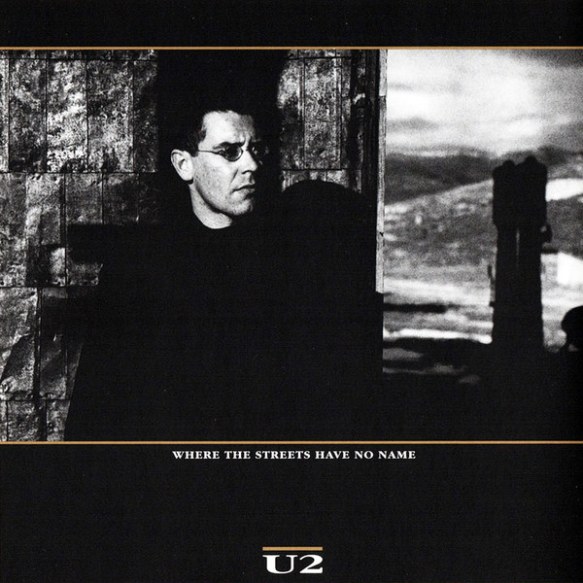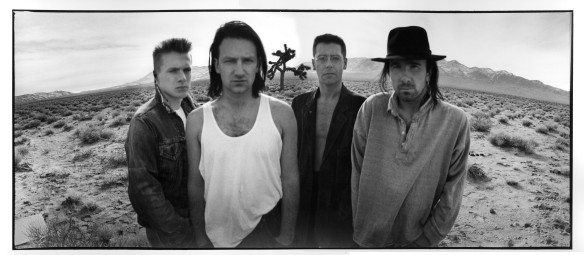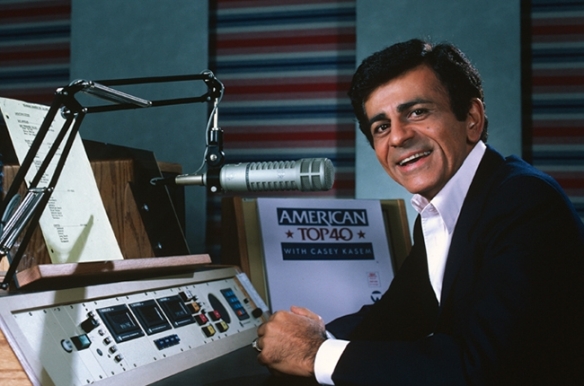
On June 15, 2014, Casey Kasem, host of the longtime countdown program, AMERICAN TOP 40, passed away at the age of 82. From my first blog post (and prolly some more inbetween then and now), I explained how, in 1979, I was a geeky, lanky and somewhat lost 12-year-old living in Central Maine, had a few friends and not a lot of interest in much of anything, but at some point early that year, I discovered AMERICAN TOP 40, and was glued to it every weekend. Not only could I hear the 40 biggest songs in the country every week, but also Casey’s cool trivia and facts about the songs and the artists, a trait I treasure to this day. For me, the show was No. 1 with a bullet. And still is (thanks to the re-airing of broadcasts of AT40 on iHeart Radio).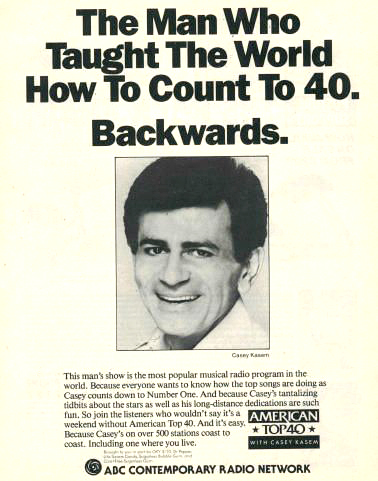
In honor of my radio hero, Casey Kasem, for the entire month of June, I will be highlighting a song each day (some days will have two songs!) that peaked in the Top 40 of the BILLBOARD Hot 100 (including five (real) one-hit wonders of the 80s), and with every blog post, just like on AMERICAN TOP 40, the hits will get bigger with each post. On June 1, 2017, I featured a song that peaked at No. 40. On June 30, I’ll feature a “song of the day” that went all the way to No. 1.
As Casey used to say on AT40, “And on we go!”
It’s June 6, 2017, and I didn’t have the best day today. It happens. In late 1984, Casey Kasem wasn’t having a good day during the recording of a segment of AMERICAN TOP 40. I’ll come back to that in a bit. But, Casey’s bad day was a good day for Dublin, Ireland’s U2.
With their first three albums – 1980’s BOY, 1981’s OCTOBER and 1983’s WAR – U2 was slowly building an audience here in America. All three albums sold well here in the U.S., especially WAR (now at 4x Platinum), which reached No. 12 on BILLBOARD’s Album chart.
My introduction to U2 happened somewhere between WAR and when I picked up the live “mini-album,” UNDER A BLOOD RED SKY, in July 1984. And, apart from some of their most recent efforts, I’ve been a huge fan since, but I don’t think it really happened for me until I picked up their fourth studio album, THE UNFORGETTABLE FIRE.

Released on October 1, 1984, THE UNFORGETTABLE FIRE took the band in a new music direction from the edgier, more raw sound of their first three albums. U2’s first three albums were produced by the great Steve Lillywhite (who worked with many artists in the 80s like Big Country, Peter Gabriel and XTC, to name a few), but, in order to achieve this newer sound, THE UNFORGETTABLE FIRE was co-produced by legends in their own right, Brian Eno and Daniel Lanois.
Bassist Adam Clayton once said about the change in producers, “We were looking for something that was a bit more serious, more arty.” The powers that be at U2’s record label, Island, tried to encourage them NOT to work with Brian Eno and Daniel Lanois, but U2 was persistent. And, in the end, it paid off.
The first single released from THE UNFORGETTABLE FIRE was “Pride (In The Name Of Love),” and was released in early September 1984, a month before the release of the album.
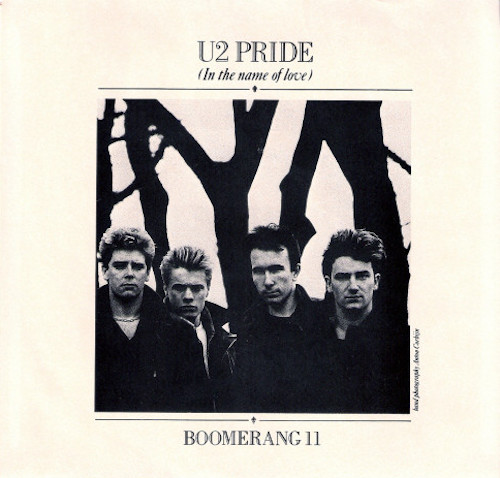
Prior to “Pride,” U2 had reached the Top 5 of Ireland’s singles chart four times, reaching No. 2 twice – with “New Year’s Day” and “Two Hearts Beat As One.” Over on the BILLBOARD Hot 100, U2 had only seen a couple of their singles reach the BILLBOARD Hot 100: “New Year’s Day” (No. 53, 1983) and a live version of “I Will Follow” (No. 81, 1984). “Two Hearts Beat As One” just missed the survey, stopping at No. 101.
“Pride (In The Name Of Love)” became the band’s third single to reach the Hot 100, debuting in late October 1984 at No. 85. Within four weeks, it became their biggest U.S. hit to that point, and on December 1, 1984, “Pride” reached the Top 40. It would spend a week at No. 33 two weeks later, and stayed on the Hot 100 until early February 1985.
Around the globe, folks were proud for “Pride” and it was U2’s first big worldwide hit, reaching No. 1 in New Zealand, No. 2 in Ireland, No. 3 in the U.K., No. 4 in Australia, No. 5 in Holland, No. 7 in Norway, No. 12 in Sweden and No. 33 in Canada (must have been a North American thing).
NERDY FUN FACT: The Pretenders’ Chrissie Hynde, married to Simple Minds’ Jim Kerr in 1984, sang backing vocals on “Pride (Is The Name Of Love),” and was credited on the song as “Mrs. Christine Kerr.”
Now back to Casey Kasem’s bad day back in 1984. Apparently, during the recording of an American Top 40 countdown (I believe the week when U2 debuted on the Top 40 at No. 39 on December 1, 1984), in AT40-ese, Casey dropped a couple of notches. As he was listing off U2’s members, he got frustrated and said, “These guys are from England and who gives a shit?!”
In 1991, this sample and other vocal and more profane samples by Casey over the years found their way onto the EP of San Francisco Experimental band Negativland. The U2 EP was notorious for highlighting “U2” in huge letters and “Negativland” in very small letters underneath it, with an image of a Lockheed U-2 spy plane in the foreground of “U2.”
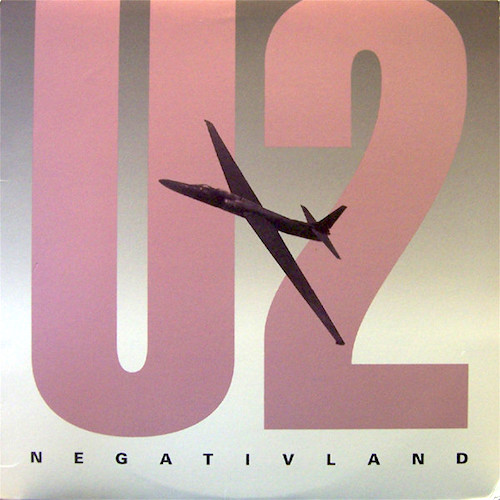
On this U2 EP were a couple different mixes of “I Still Haven’t Found What I’m Looking For,” with those Casey Kasem samples (including his famed “Long Distance Dedication,” thrown in there as well). These covers were more parodies than covers (kazoos were involved, as were bits and pieces and samples of the original U2 song). Regardless of whether or not they were covers, U2 was not impressed and Island Records sued Negativland for a violation of trademark law, not just for the huge “U2” on the EP, but for the song itself.
Island Records also believed it was a deliberate attempt to confuse U2 fans awaiting the new U2 release, ACHTUNG BABY, making them believe they were purchasing a new U2 album called NEGATIVLAND. The EP was withdrawn, but the tracks resurfaced on a legally-released album a decade later (with bonus material) as THESE GUYS ARE FROM ENGLAND AND WHO GIVES A SHIT?

Negativland’s interest is in intellectual property rights. They argued that their use of U2’s and other artists’ work falls under the “fair use” clause. They released a CD in 1995, along with an accompanying book about this whole U2 experience, called, FAIR USE: THE STORY OF THE LETTER U AND THE NUMERAL 2 (Of U2’s name, Casey Kasem described it on AMERICAN TOP 40 as “That’s the letter U and the numeral 2.”)
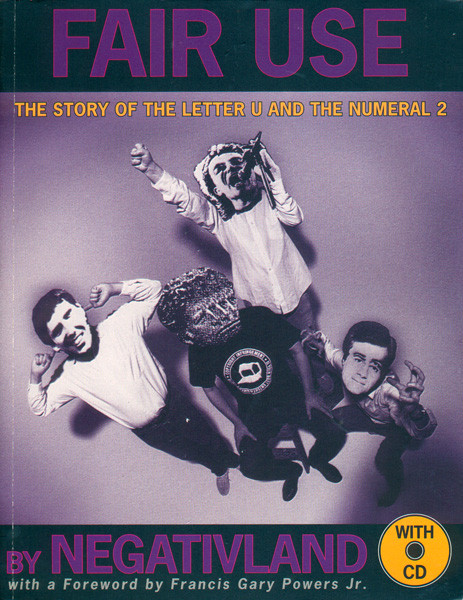
“Pride” was originally written about Ronald Reagan’s pride in the USA’s military power, but Bono was influenced by Stephen B. Oates’s 1982 book, LET THE TRUMPET SOUND: A LIFE OF MARTING LUTHER KING, JR., as well as a biography about Malcolm X, examining the violent and non-violent sides of the civil rights campaigns of the 60s. Lead singer and lyricist Bono rewrote the lyrics to “Pride (In The Name Of Love),” and it ended up being about Martin Luther King, Jr.
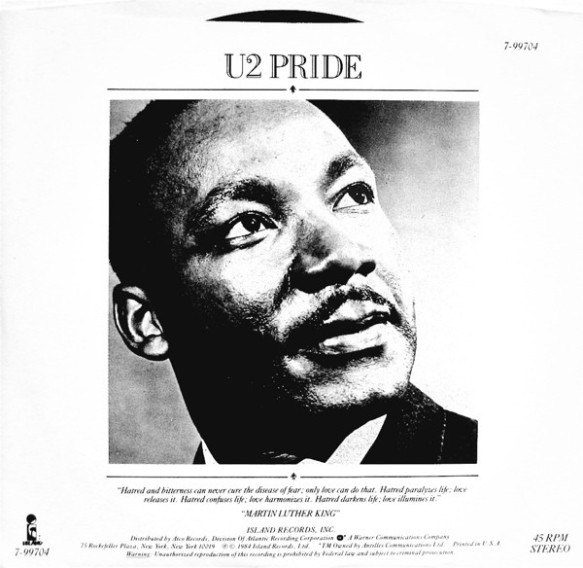
Hard to think about now, but oddly enough, at the time of its release, “Pride” got mixed critical reviews. Kurt Loder, who reviewed THE UNFORGETTABLE FIRE in 1984 (and would later join MTV), gave the album three out of five stars, and said of “Pride”:
“One would like to be able to summon praise for such well-intentioned tracks as ‘Pride (In the Name of Love),’ which was inspired by Martin Luther King, but ‘Pride’ gets over only on the strength of its resounding beat (a U2 trademark) and big, droning bass line, not on the nobility of its lyrics, which are unremarkable.”
Well, reviews for both THE UNFORGETTABLE FIRE and for “Pride” only improved with time, and ROLLING STONE ranked it as No. 388 on their 500 Greatest Songs Of All Time list, and it’s also included on the list of the Rock And Roll Hall Of Fame’s 500 Songs That Shaped Rock And Roll.
And prolly the best review of all? When the song came out, the late, great Coretta Scott King, the widow of Dr. King, invited the band to the Martin Luther King Center in Atlanta, which they visited during their 1984 tour.
Maybe Casey Kasem didn’t give U2 much thought when “Pride” came out, but he changed his tune (pun intended) the next time U2 made the Top 40 – when THE JOSHUA TREE’s “With Or Without You” spent three weeks at No. 1 on the Hot 100 in May 1987.
As for me? Well, when I bought UNDER A BLOOD RED SKY, I was curious about the band so many people were raving about. And I loved the album. When I bought THE UNFORGETTABLE FIRE, I would never forget U2 again…
https://www.youtube.com/watch?v=LHcP4MWABGY


 The music video was for the album’s third single, “Where The Streets Have No Name,” and was inspired by The Beatles’ 1969 rooftop concert, better known as the final public performance for the band, which was later featured in the 1970 documentary film, LET IT BE.
The music video was for the album’s third single, “Where The Streets Have No Name,” and was inspired by The Beatles’ 1969 rooftop concert, better known as the final public performance for the band, which was later featured in the 1970 documentary film, LET IT BE.